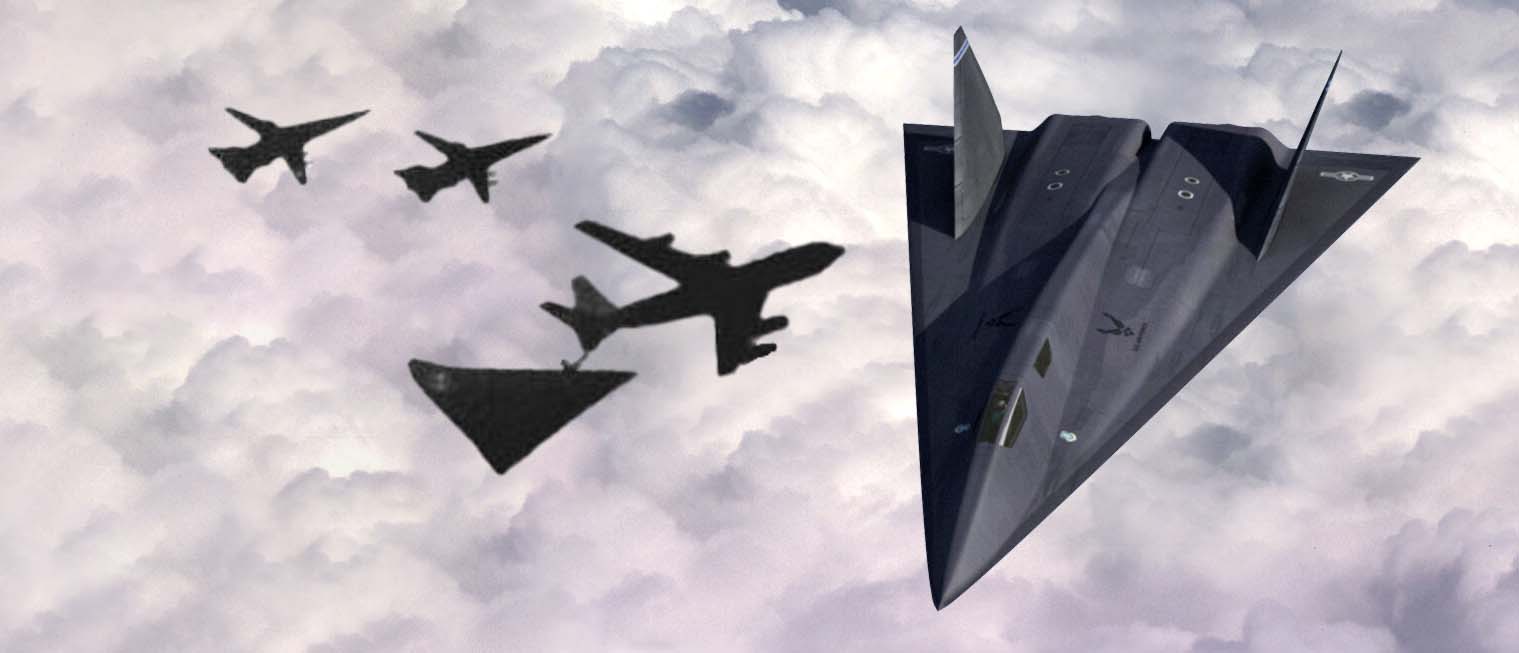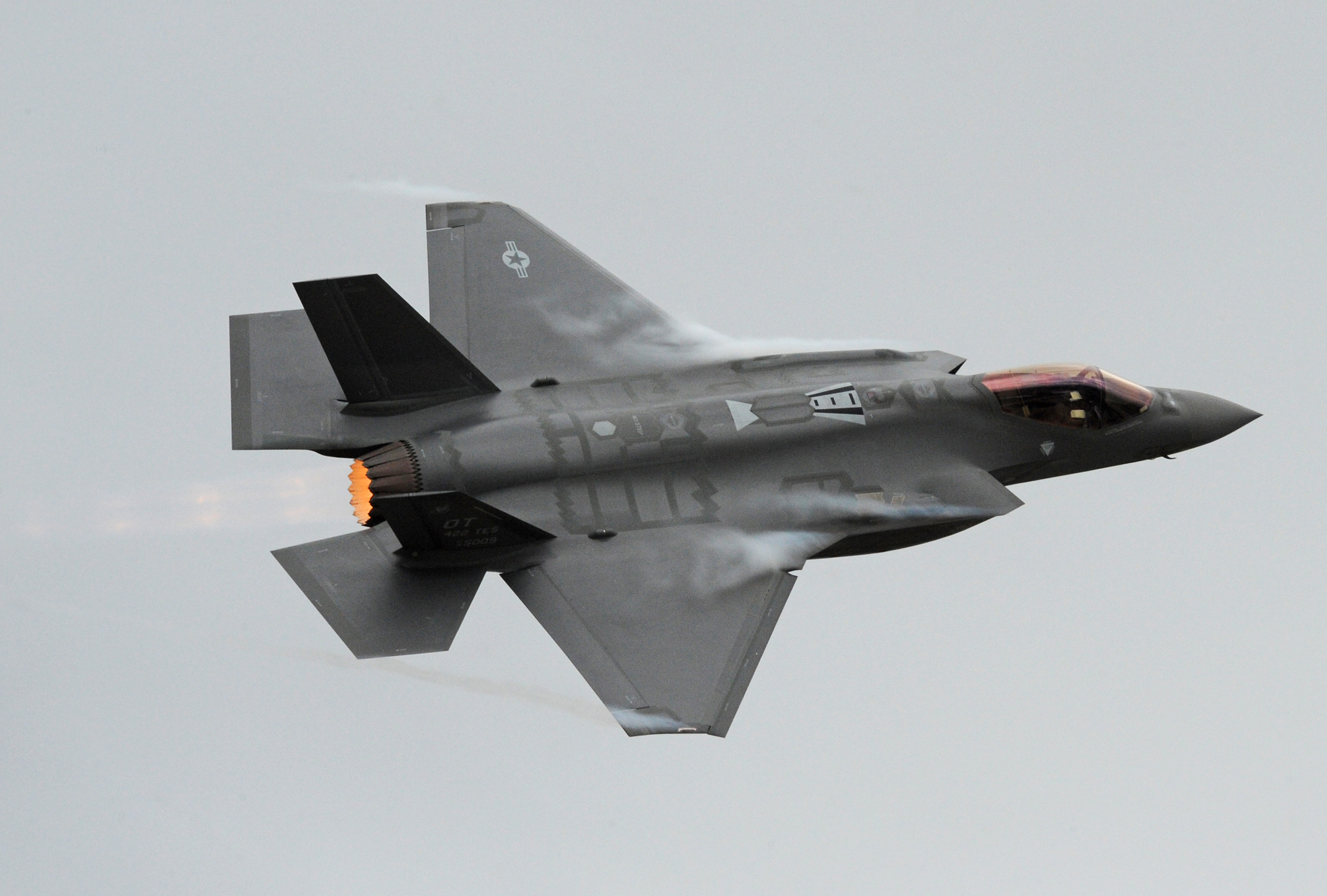Newest Top-secret Aircraft - In 1955, the U.S. Air Force's Central Intelligence Agency and defense contractor Lockheed Martin chose a very remote site in the Mojave Desert in southern Nevada, about 80 miles northwest of Las Vegas, to begin testing and developing the world's newest and most advanced aircraft at the time.
For decades, the Nevada Test and Training Range, better known as Area 51, did not appear on any public map, and the US government did not even acknowledge its existence. Thanks to the ironclad security surrounding the site and the experimental nature of the "black planes" tested there, rumors of unidentified flying objects, trapped aliens, and other mysterious activities have been swirling around Area 51 since the 1950s.
Newest Top-secret Aircraft

But while no alien-created UFO has ever taken to the skies above the salt flats known as Groom Lake, we now know - thanks in large part to declassified CIA documents - that several highly sophisticated and unusual aircraft were developed and tested there. . From Cold War-era U-2 spy planes to simple experiments
F 22 Raptor > Air Force > Fact Sheet Display
In the early 1950s, at the height of the Cold War, the CIA began secret work on a scout plane that could fly to 70,000 feet, high enough (supposedly) to avoid detection by Soviet radar. The result, codenamed Project Aquatone, was the U-2, a single-engine aircraft with glider-like wings designed by Clarence "Kelly" Johnson, founder of Lockheed Martin's Advanced Development Projects division (better known as Skunk Works). Lockheed built the plane at the Skunk Works headquarters in Burbank, California, in just eight months, then sent it for testing at Area 51, which Johnson dubbed "Paradise Ranch."
Before the U-2 was ready to fly, Lockheed engineers had to find a fuel that would not evaporate at the high altitudes at which the aircraft was designed to fly. To meet this challenge, Shell Oil Company manufactures a special low-volatility petroleum fuel using petroleum by-products commonly used in 'Flit' fly and bug sprays. In addition, the technology behind the pressure suits, developed to keep U-2 pilots alive at such high altitudes, later played an important role in the manned space program.
The U-2 (coincidentally) made its first test flight over Groom Lake on August 1, 1955, and less than a year later made its first flight over the USSR, becoming "immediately the most important source of intelligence in the Soviet Union" according to a now released CIA report. But this came at a price: in 1956, three CIA pilots were killed during U-2 test flights, including two at Area 51 and one at an Air Force base in Germany. In May 1960, the Soviets shot down a U-2 over the Russian city of Sverdlovsk, capturing its pilot Francis Gary Powers and forcing the US to admit to spying. When President Eisenhower stopped all U-2 flights over the Soviet Union, plans were already being developed for smaller, faster, and more stealthy aircraft.
Launched in 1957, Project Oxcart produced two of the fastest and tallest aircraft in the US, the single-seat Archangel-12 and the two-seat SR-71 Blackbird. The A-12 has two jet engines, a long fuselage and a distinctive cobra-like appearance.
Hill Selected To Receive First Operational F 35a Aircraft > 419th Fighter Wing > News
The first completed A-12 arrived at Area 51 in February 1962, having been disassembled in Burbank and transported to Nevada in purpose-built trailers costing nearly $100,000 (over $830,000 today). To keep the existence of the A-12 secret, the CIA informed the head of the Federal Aviation Administration (FAA), who ensured that air traffic controllers were asked to submit written reports of unusually fast, high-flying aircraft, rather than mentioning such sightings. over the radio. However, reports of UFO sightings around Area 51 peaked in the mid-1960s, writes Annie Jacobsen in the book Area 51: America's Top Secret Uncensored Military Base, which began shortly after the A-12 made its first official flight over Area 51 in April 1962.
Declared fully operational in 1965, after achieving a sustained speed of Mach 3.2 (just over 2,200 mph) at 90,000 feet, the A-12 began flying over Vietnam and North Korea in 1967. The following year, it was retired in favor of the Air Force's successor, the SR-71 Blackbird.
The US Air Force SR-71A, also known as the "Blackbird", was put to the test during a test flight over Beale Air Force Base in California. The aircraft is Lockheed's strategic reconnaissance aircraft and is the world's fastest and highest-flying operational aircraft.
Longer and heavier than the A-12, the SR-71 matched supersonic speed with a low radar profile, thanks to its sleek, conical design and radar-absorbing black paint. On July 28, 1976, the pilot flew the SR-71 at a record speed of Mach 3.3, or 2,193 mph. At 400 feet per second, this is actually faster than a high-speed rifle bullet. Retired in 1990, after more than three decades of service, the SR-71 remains the world's fastest aircraft.
Into The 'misty' — New Film Highlights Top Secret Missions Of Vietnam Pilots
In addition to testing new aviation technology, Area 51 was also used to study foreign warplanes that the U.S. government secretly acquired during the Cold War. In the late 1960s, according to declassified CIA documents, the Air Force acquired "Fishbed-E", a Soviet MiG-21 fighter that was lent to the United States after Iraqi pilots used it to escape to Israel. Under the program code-named Have Donut, Area 51 personnel studied and reverse-engineered the Mach-2 fighter to determine its performance and compare it to U.S. fighters. Chosen.
Over 40 days in 1968, American pilots flew the MiG in 102 test flights, recording 77 hours of total flight time. They found that while the Soviet aircraft was slower than U.S. aircraft such as the F-5 and F-105, it had a tighter turning radius than either; this discovery prompted analysts to warn US pilots to avoid "prolonged maneuver" or dogfight.
Area 51's top-secret MiG program paid off in the skies over Vietnam, where U.S. Air Force pilots ended the war with an overall kill-to-loss ratio of two to one, shooting down a total of 137 Soviet MiGs. It would also be the impetus for the creation of the famous Top Gun fighter pilot school, founded in 1969.
In the 1970s, Area 51 developed the country's first stealth bomber, the F-117 Nighthawk, designed by Lockheed's Skunk Works and developed under the code name Have Blue. With its faceted diamond-like surface designed to reflect and disrupt radar beams, the F-117 could almost be mistaken for the boomerang-shaped UFO that has been in the popular imagination since the 1940s.
A First Look At The B 21 Raider Bomber Is Coming Soon
Although the futuristic alien-looking plane first flew over Area 51 in June 1981, it wasn't announced publicly until late 1988, spending seven years in secret as one of the Pentagon's most valuable black projects. After bombing important targets in Baghdad to launch Operation Desert Storm in early 1991, the F-117 served with US forces in Afghanistan and again in Iraq before being retired in 2008. However, an unknown number is still flying.
In the 1990s, Boeing developed its own secret Bird of Prey aircraft as part of a project managed by the Air Force at Area 51. A research and development aircraft that was never intended for production, similar to the YF Falcon. The name 118G comes from the resemblance to the battlecruiser used by the Klingons in the 1984 film
The aim is to test different aviation technologies and ways to make planes less visible to the eye and detectable by radar.
Bird of Prey first flew from Area 51 in 1996; made 38 flights before the program ended in 1999. It was declassified a few years later, and Boeing donated the plane to the National Museum of the United States Air Force, although it still conceals many of the plane's most secretive aspects.
Us Unveils $700m, Next Generation B 21 Nuclear Bomber
FACT CHECK: We strive for accuracy and fairness. But if you see something that doesn't seem right, click here to contact us! regularly review and update its content to ensure that it is complete and accurate. The US Air Force has revealed concept art for its new fighter jet that was secretly designed, built and tested.
Last September, the USAF's top officer, Will Roper, told Defense News, "We built and flew a full-size real-world flight demonstrator and broke records at it. We are ready to build next-generation aircraft in a way that has never been done before."
The new aircraft to replace the F-22 is part of the Next Generation Air Dominance (NGAD) program.
Not much is known about the jet, but the Air Force has just revealed an important clue: concept art for a fighter built under the NGAD program. The photo appears in the recently released USAF Biennial Report on Acquisitions. Read the full report here.
Chengdu J 20
The report said about the program: “Next Generation Air Superiority is a family of capabilities that enable Air Superiority in the most challenging operational environments by enforcing the development pillars of digital engineering, agile software development and open architecture. By implementing shorter technology development cycles, the program matures the technology and reduces risk
Newest us military aircraft, newest lockheed martin aircraft, newest victoria secret, newest aircraft carriers, newest military aircraft, newest aircraft, newest boeing aircraft, secret us aircraft, newest us aircraft carrier, newest aircraft designs, newest commercial aircraft, newest fighter aircraft


0 Comments